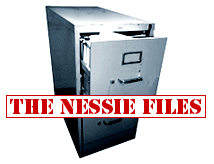|
• extra Feb. 7, 2000 |
more Web exclusives
| sfbg.com |

|

TED (snip)
"In a narrow-band HPM device, high technology vacuum tubes are used that are, in some ways, very similar to those used in our highest-powered TV or FM stations and radar systems. They are very delicate devices, are complex, and very expensive. They require large amounts of primary power and generally require some type of cooling system, either air blowers or liquid types. All of this complexity requires complex engineering and development, and the manufacturing time is great and costly. Not for the amateur or a low-cost, start-up operation. Generally a highly skilled team of various technical experts of numerous engineering specialties is required to manage the development and operation of such devices.
"TEDs, on the other hand, are relatively simple devices that generally use simple spark-gap switches, either in oil or in pressurized gas pulse storage lines. The power supplies are relatively small in size and much lower in average power and cost than for the NB systems. The engineering and mechanical issues are small in comparison to the narrow-band devices. The technology is well described in the various professional Pulse Power references found in good technical libraries. The significant development, engineering, and manufacturing costs are small in comparison to narrow band. Most of the technology required is available and is an outcrop of the various nuclear and flash x-ray work done in the past.
"NB systems operate at some given frequency with a small bandwidth, and you will find them at one spot on the radio dial. The TEDs do not even have a definable frequency but instead, because of their short time duration, they occupy a very large spectrum space, and you will find it everywhere on every radio dial. When a TED pulse is generated it will have the ability to excite responses in systems designed to receive at any frequency from as low as 100 MHz up to several GHz, from the FM band up to the lower microwave bands. A NB system would excite only those systems that were operating at its frequency, say 2.345 GHz, so a narrow band system must be "tuned" to a given target's known soft spot but a TED system would go after any soft spot of the target platform, back-door or front door.
"So what is the bottom line of this discussion?
"Because of the simplicity of TED systems and the suspicion that they may cause disruptive effects to electronic systems that they are aimed at, they make an attractive approach for RF terrorists to use for various purposes. We see hints of this vulnerability in the many warnings that we get each month about locations where we should not use radios and electronic devices for fear that we will do some damage to something. They make passengers on aircraft, during take off and landing, turn off radios, games, and other electronic devices. Hospitals regularly place signs that electronic devices are not allowed. Many people do not want you using your cellular telephones near their computer. Many repair shops require that wrist-bands attached to ground be used when opening electronic equipment for repair. We have a lot of things out there in the world that either have known or suspected vulnerabilities to RF fields or electrostatic discharge. A TED system provides both of these conditions, an RF electrostatic discharge nature and its output (the number of pulses per second) can be adjusted for maximum disruptive effect. Its peak power output can be made much higher than those fields ordinarily found in everyday systems like cellular radios, radar systems, TV and FM stations, and simple ESD effects.
"It clearly appears, based on testing that has been done as well the information presented at unclassified technical papers and conferences, that the TED would make a good terrorist RF weapon and that, with the proliferation of high technology infrastructure systems that are integral to everyday life in our country, we would be very vulnerable to such systems. It is also clear, because of the extreme cost of repairing all of the vulnerable systems, that until this vulnerability was shown, no one would have much concern or interest in it."
– Mr. David Schriner, before the Joint Economic Committee, United States Congress, Wednesday, February 25, 1998, "The Design and Fabrication of a Damage Inflicting RF Weapon by 'Back Yard' Methods"
|
|
return to top | more Nessie Files | more Web exclusives
| sfbg.com
|